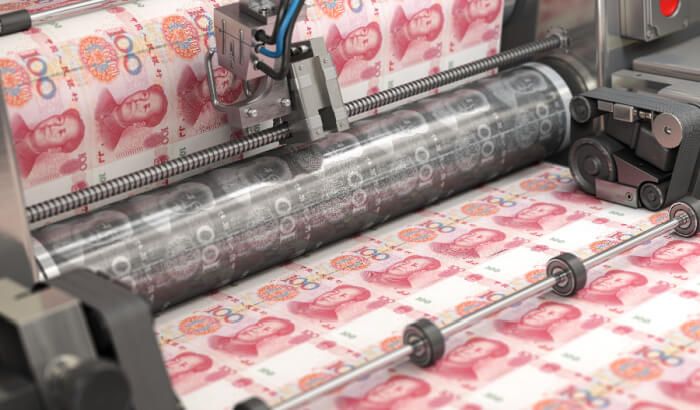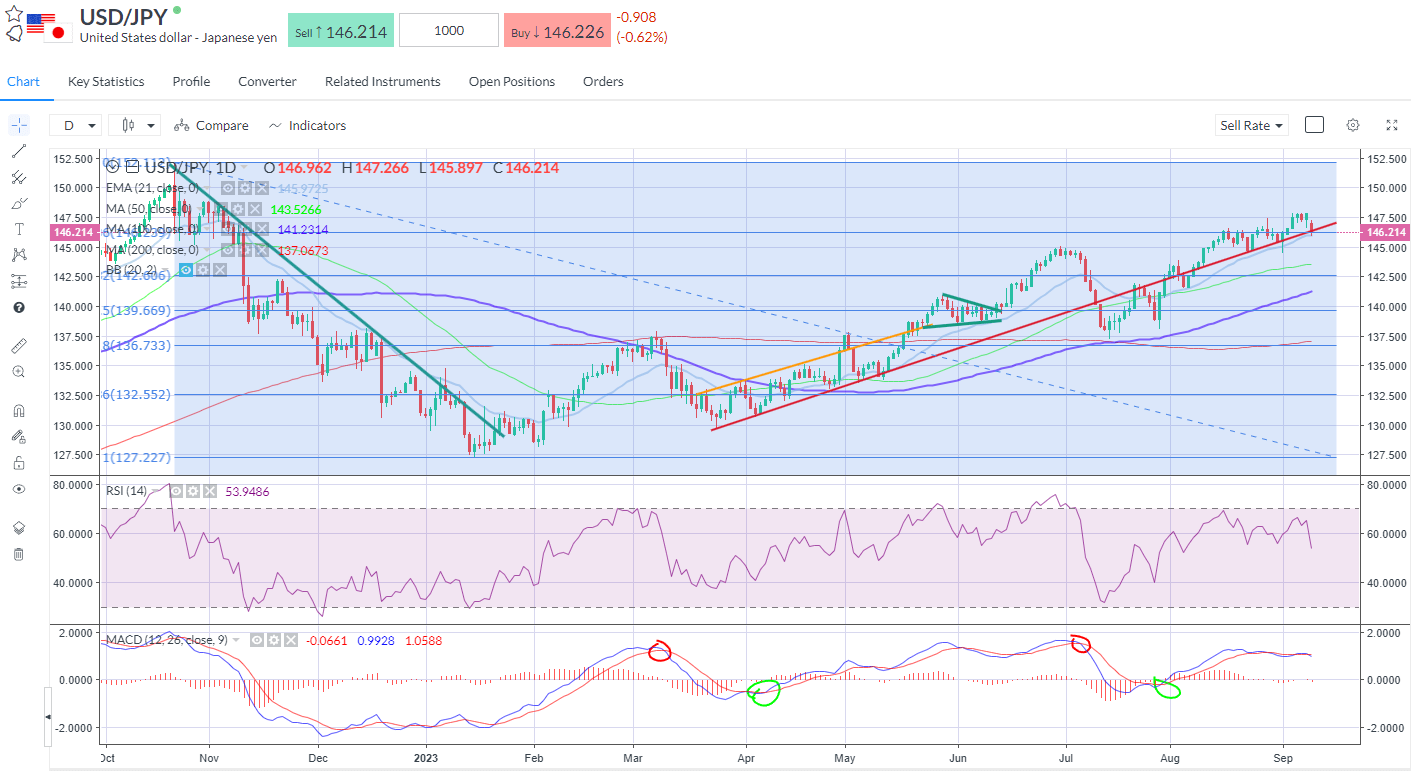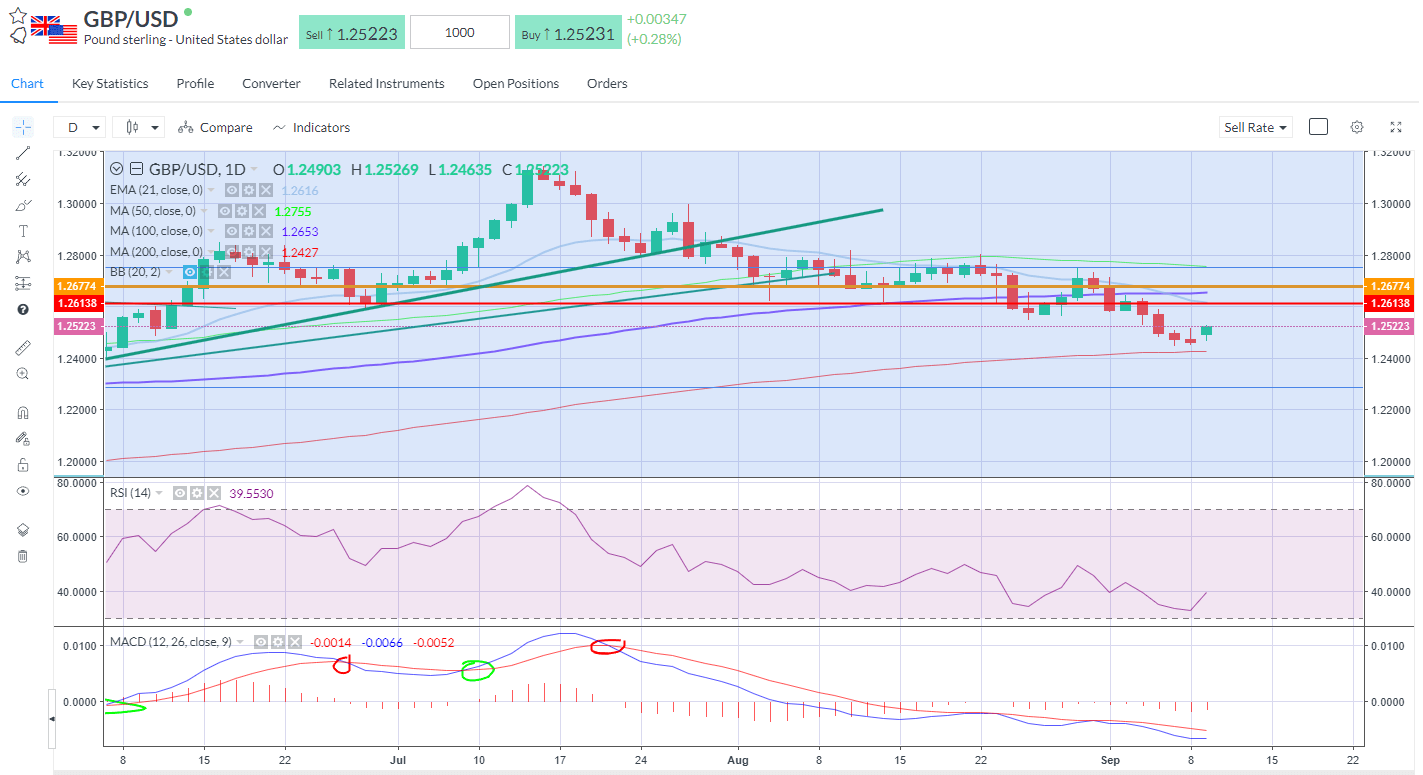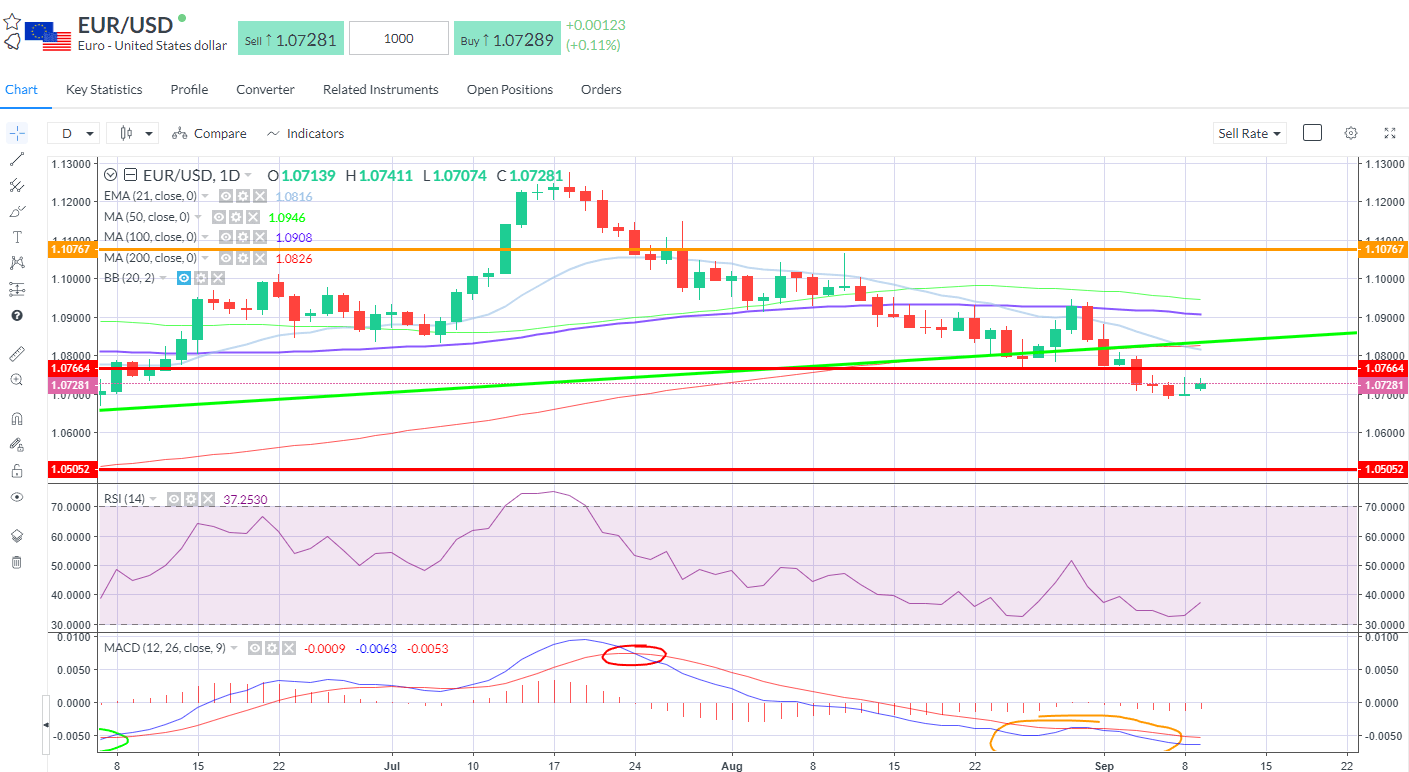
星期一 Sep 11 2023 10:39

9 最小

Stocks were on a firm footing at the start of trade on Monday after data showed China’s deflationary pressures easing, offering some more encouragement to investors as they look ahead to the European Central Bank meeting later this week. The FTSE 100 added almost 1% to 7,550, rising to its best in a month as we see some signs that it could progress to the top of the range around 7,770. BNP’s backing for UK stocks did the rounds in the press over the weekend. Miners and housebuilders led the charge, with basic resources stocks up 2.5%.
Miners were boosted by a jump in commodity prices overnight as Chinese data improved. China CPI returned into positive territory to rise +0.1% year-on-year, while factory gate deflation eased, with the PPI falling 3.0%, down from the 4.4% the prior month. Copper, iron ore and silver rallied firmly, sending the likes of Fresnillo, Anglo American and Rio Tinto towards the top of the London market.
Leading the housebuilders, Vistry jumped 15% as it announced plans to merge business units and said it would return £1bn to shareholders, although profits declined 8%. Interesting to see Liberum out with a note today highlighting some value in housebuilders as the peak in rates is hit. Its top buys are Vistry, Barratt, Bellway, and MJ Gleeson. Persimmon and Barratt rose more than 3% on the read across and broker note.
Elsewhere, the CAC rose almost 1% at the open to clear 7,312 and the DAX rallied about 0.8% to 15,871 in early trading; both trimming gains as the session progressed. Chinese stocks were mainly higher, whilst Tokyo slipped as the yen rallied on comments from the central bank governor, whilst Alibaba led the Hang Seng lower for a fourth straight day as its outgoing CEO unexpectedly quit from a separate role as head of the cloud business. The yuan rallied off a 16-year low as the PBOC set a strong fix. The S&P 500 rallied Friday to snap a 3-day losing streak but ended the week lower. Oil was steady, with WTI (Oct) at $87.30, a shade off last week’s multi-month highs, whilst gold traded around the $1,930 level with the 200-day line still holding firm. Treasury yields are fairly steady with the 10yr just tracking a bit below 4.3% - 4.34% is the number to watch. Data is light today, little to speak of.
The yen jumped along with JGB yields as markets reacted to hawkish remarks from the Bank of Japan’s governor Ueda, who indicated normalisation might be around the corner. Speaking to a Japanese paper, he said the BoJ could start to act once the 2% inflation target is close, which could mean hike next year. USDJPY dropped and took at 145 handle, its lowest since the start of September, bouncing off the 21-day EMA support.

Sterling was sharply higher as the dollar was offered across the board.

The euro caught some tailwinds ahead of the ECB meeting, firming up to around 1.0740, Friday’s high that was smartly rejected.

Economic growth is stalling – the latest composite PMI for the Euro area out this week showed activity was worse than feared – down at 46.7 vs 47.0 on the flash estimate. Q2 growth was revised down to just 0.1% from 0.3%, underlining the tough task facing the ECB next week. Just to make it even muddier for the ECB its own survey data this week shows 3-yr inflation expectations have risen to 2.4%, exactly the opposite of what the central bank may rightly expect after such an aggressive period of tightening, having raised by a cumulative 425bps in a year.
Expectations for whether the ECB hikes or pauses next week are evenly split depending on who you talk to. The inflation and economic picture is kind of muddy. Core inflation edged down to 5.3% in August from 5.5% in July, whilst headline remained steady at 5.3%. The day before this data some sticky Spanish and German inflation figures had seen markets shorten the odds on a hike by the ECB, only for the broader Eurozone data to see yields dip back down. Meanwhile the PMI data is painting a woeful picture for the EZ economy. The ECB left another hike in September on the table at its last meeting in July. How much have things changed? The economic outlook is worse, but inflation is a shade cooler. Does that mean it’s time to pause?
Minutes from the July meeting released a few days ago illustrate a bias towards tightening, but that policymakers are probably a bit more mindful of being too hawkish. For instance, policymakers agreed that “in view of the prevailing uncertainties and the large costs of bringing inflation down once it had become entrenched, it was argued that it was preferable to tighten monetary policy further than to not tighten it enough. Before deciding to stop the tightening cycle, the Governing Council needed clearer signs of whether inflation would converge to target once the effects of recent shocks had faded”.
In July the ECB was more worried about inflation being too high than anything else – just. But that calculation may have become more balanced, and a pause could be the easier course of action for the central bank. On the other hand – the ECB will be worried about the inflation expectations survey and I believe they will on balance prefer not to stop prematurely. Partly this will be down to fears about a wage-price spiral with unemployment so low.
ECB officials have been preparing the ground – governing council member Knot – admittedly on the hawkish end of the committee – said this week that markets are maybe underestimating the chances of a rate hike this month.
The problem will be stagflation – just as CBs were too slow to tighten after the pandemic, they’ll keep rates too high for too long as the economy slows because inflation won’t go away quickly enough. They’ll do higher for longer but that does not mean it’ll be because of a strong economy – the pendulum is swinging and we are heading for a period where rate hikes catch up with the real economy and the consumer. Those long and variable lags. But with still too high inflation they dare not cut rates too soon or lose credibility in the inflation fight – to cut early will be to let inflation loose for a second time and never get hold of it again. This is the corner the CBs are painting themselves into., So while the market is betting on cuts because of slowing growth and a potential recession what they are not allowing for is that we can have both crappy growth and stubborn inflation and high nominal rates set by CBs. This is the worst of all worlds for risk assets and stocks in particular. Multi-year ranges seem to be what we are left with. Eventually they will have to tacitly or explicitly accept structurally higher and lumpier inflation.
Tomorrow, traders and policymakers at the Bank of England alike will be watching the latest data on the UK labour market and wages. There have been signs of cooling with the unemployment rate rising to 4.2%, but wages remain a headache for policymakers with annual growth in average total pay, including bonuses, accelerating to 8.2%. KPMG’s hiring survey showed activity declined to a three-year low, helping to nudge gilt yields lower.
Wednesday sees the latest US CPI inflation data, offering a clue about what we can expect from the Fed next week. CPI rose 3.2% from a year ago in July, which was less than expected. The core CPI was 4.7%, with both advancing 0.2% month-on-month. Investors were encouraged though that almost all the inflation is now coming from shelter costs. Elsewhere, the UK GDP figures will be useful ahead of the BoE later this month.
